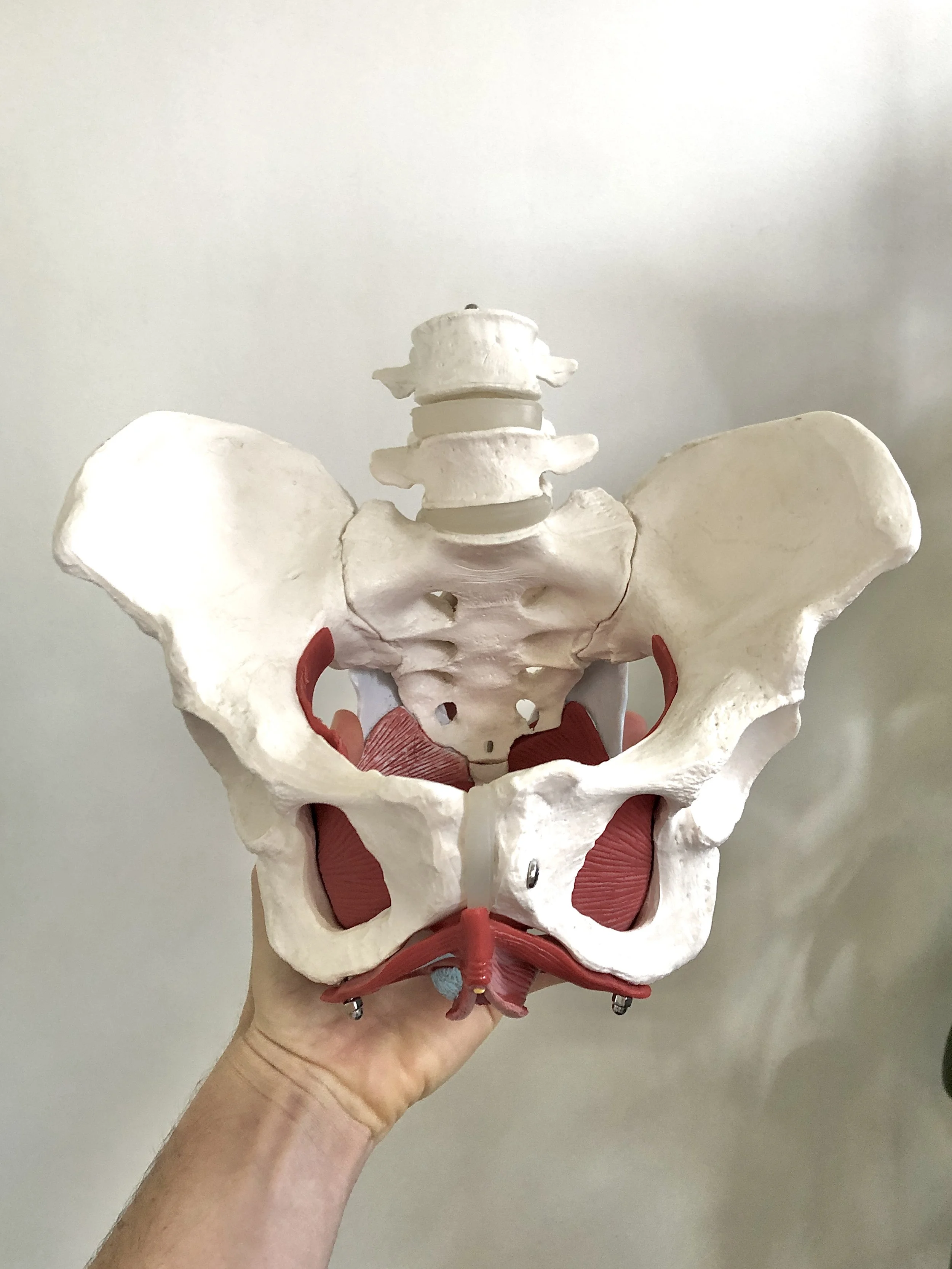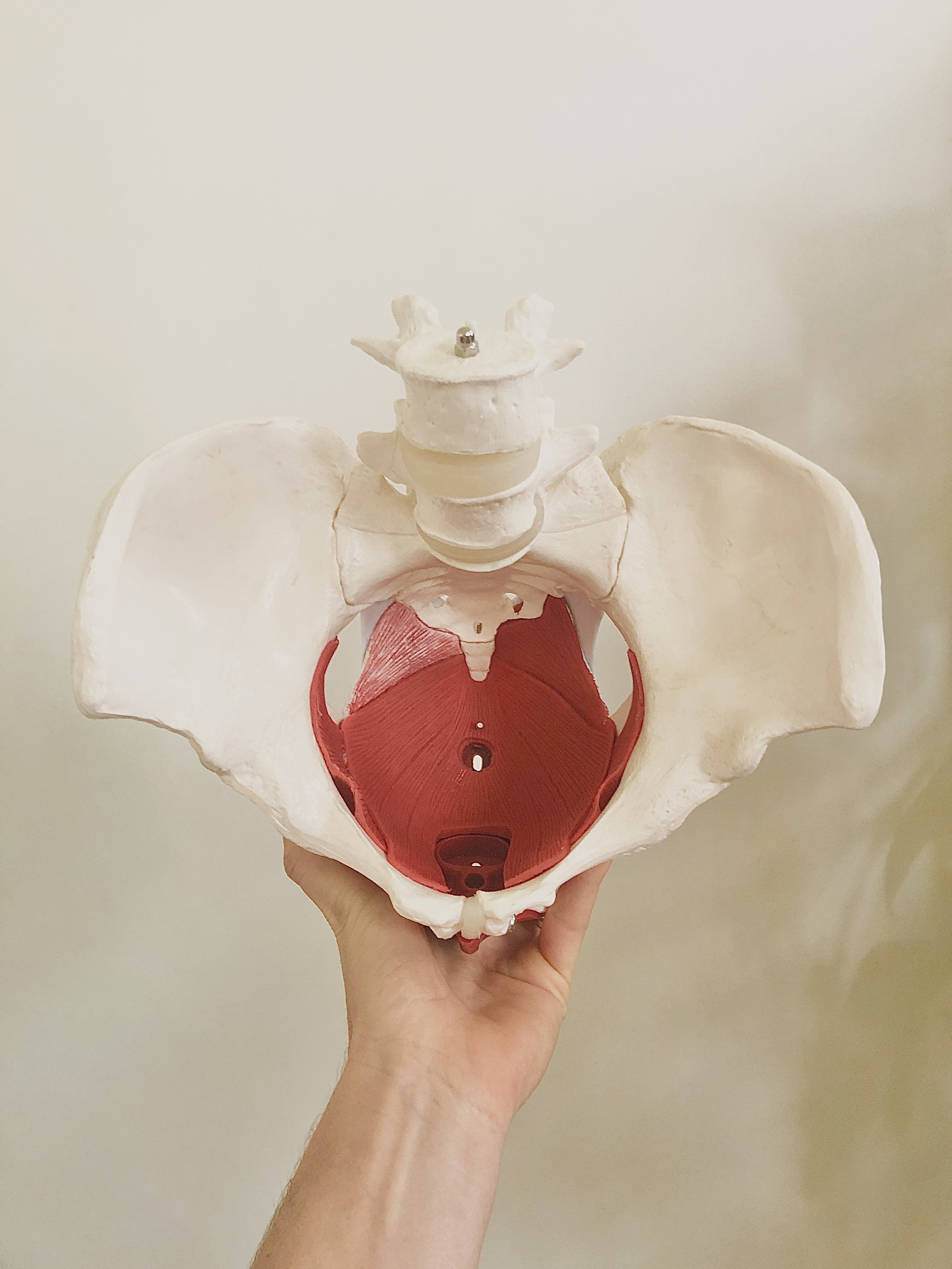Pelvic Health
Find out how an Osteopath can help you with the pelvic health:
What is Pelvic Health Osteopathy?
The goal of pelvic health osteopathy at Empower Osteopathy is to improve pelvic floor function through education, hands-on treatment, exercise, and lifestyle modification to help optimise movement, decrease pain and symptoms, and improve quality of life.
Pelvic pain can occur from the lower belly to the insides/above your legs. Pelvic pain can be caused by your digestive (intestines, bowel), urinary (bladder, urethra), reproductive (ovaries, uterus), neural (specific nerves) or musculoskeletal systems.
Osteopathic Assessment & Treatment?
Main Concerns
We have a discussion about what your main concerns may be and the associated symptoms.
Some common presentations include postnatal checkups, pain with sex, bladder leakage or urgency, and pelvic pain.
Medical History
We ask questions about your symptoms, medications, medical history and other factors that may contribute to your health. Extra obstetric & gynaecological history questions such as bladder, bowel and sexual history. Other lifestyle and general health questions
We often get you to complete a Pelvic Health Questionaire before your appointment to gather in-depth knowledge of your bladder, bowel and sexual function.
Discussing your history will provide a good indication as to what examinations and treatment techniques may be helpful.
Examination
A complete osteopathic examination may involve postural assessments, movement and functional assessments, orthopaedic and neurological tests and assessments of certain activities or exercises.
As an osteopath, this involves a whole body approach, firstly looking at your spine, movement (with a focus on the lower back, pelvis and hips), general muscle testing, diaphragm/breathing, abdominal wall and muscle coordination, and some orthopedic tests.
Internal assessment - Optional *
We start with education about your anatomy and physiology and explain the different layers of the pelvic floor. The assessment can involve a group of muscles, ligaments and fascias involved with urinary, bowel and sexual function. After an understanding and explanation of specific evaluations of the pelvic floor muscles, the following examination options include:
external vulva examination,
internal vaginal palpation,
measuring of pelvic floor strength (overactive and weak pelvic floor),
and pelvic floor mapping, a technique that involves assessing and treating areas of tension, trigger points, and altered sensation in the pelvic floor and surrounding tissues.
Treatment plan
We work together to form an individualised treatment plan that suits you.
Treatment from an osteopathic approach is influenced by factors such as muscular connections, biomechanical forces, fascial lines, joints, nerve supply, circulation and drainage and embryological connections. It’s not just the muscles!
Treatment techniques, Advice, Exercise programs & Education
Treatments can involve:
Hands-on treatment: myofascial release techniques, both internal and external, to treat pelvic floor dysfunction. Along with other general osteopathic techniques to areas contributing to your condition. These can include various treatment techniques such as soft tissue massage, manipulation, stretching and strengthening, dry needling, cupping, visceral manipulation and more.
Education: We explain and demonstrate, with models, the structure, function and motion of mechanical aspects, including neuro-musculoskeletal components, to better understand and manage your pelvic pain, and educate about the most recent evidence behind what is happening and treatment options. We may discuss pelvic rehabilitation, lifestyle and behavioural choices, and biopsychosocial involvement.
Exercise Prescription: This can involve stretches, strengthening exercises, pelvic floor awareness exercises, bladder training, breathing exercises etc. A personalised pelvic floor training program, working on endurance (slow twitch) and short sharp (fast twitch) exercises.
Further investigations: Bladder diary, bowel diary, pad weight test, referral for other investigations.
Evidence-based treatment plans and progressive clinical goals for pelvic floor dysfunctions.
Are you ready to take your health back into your own hands?



